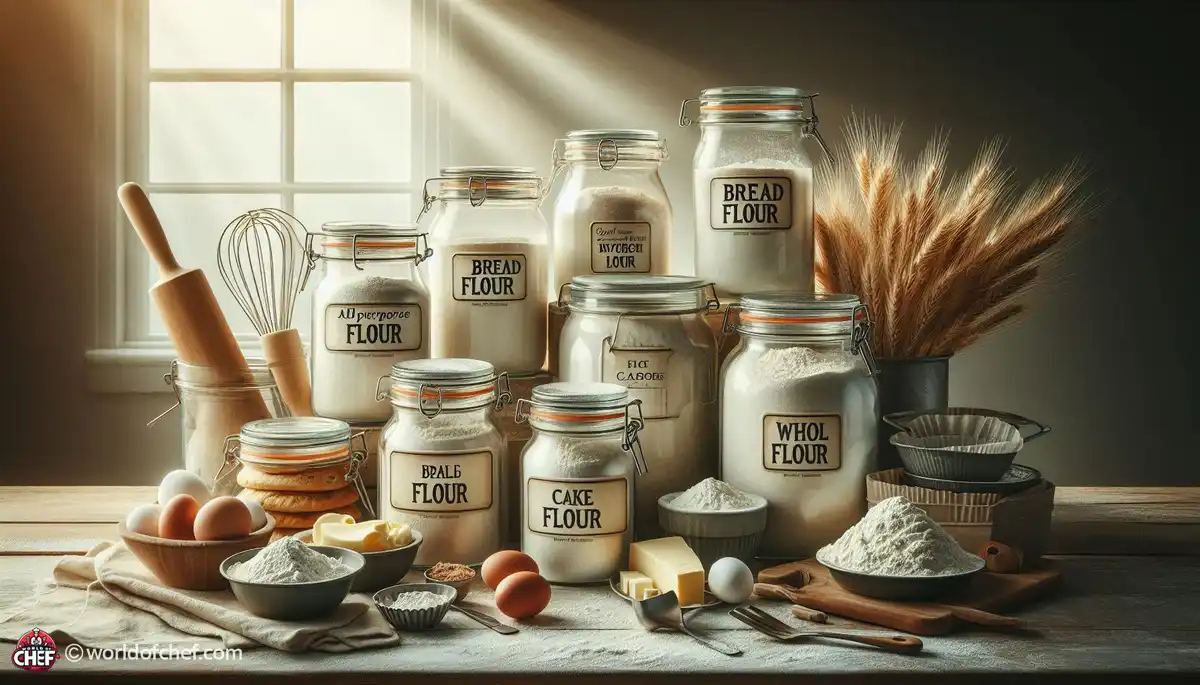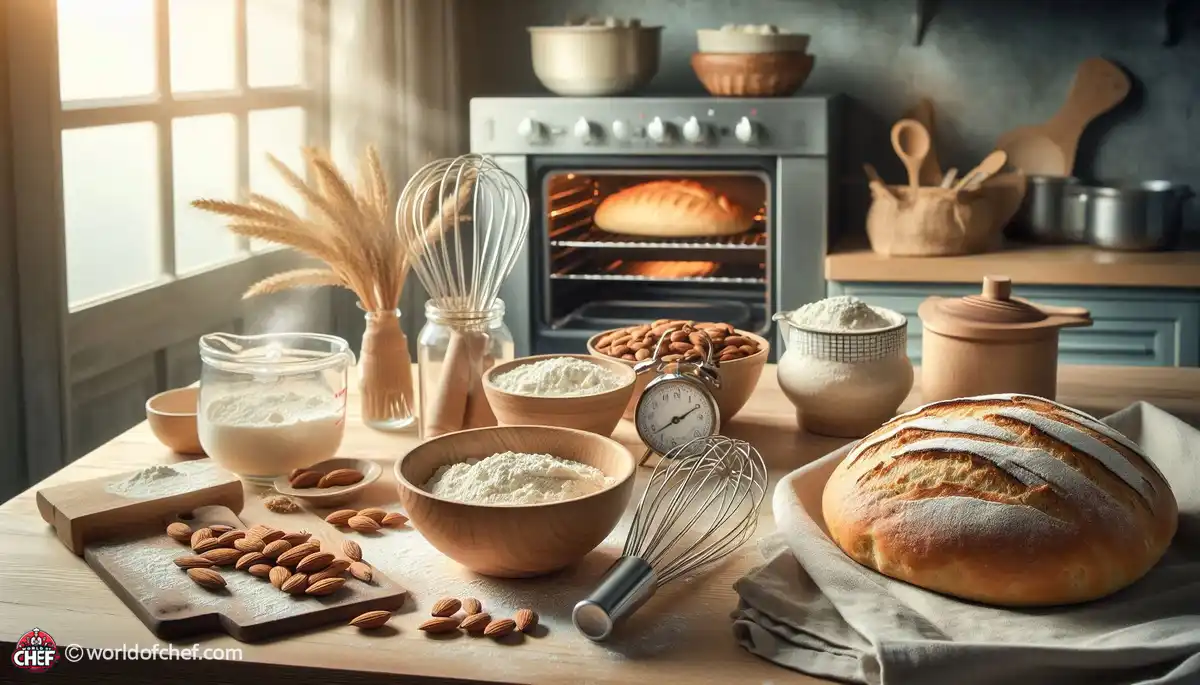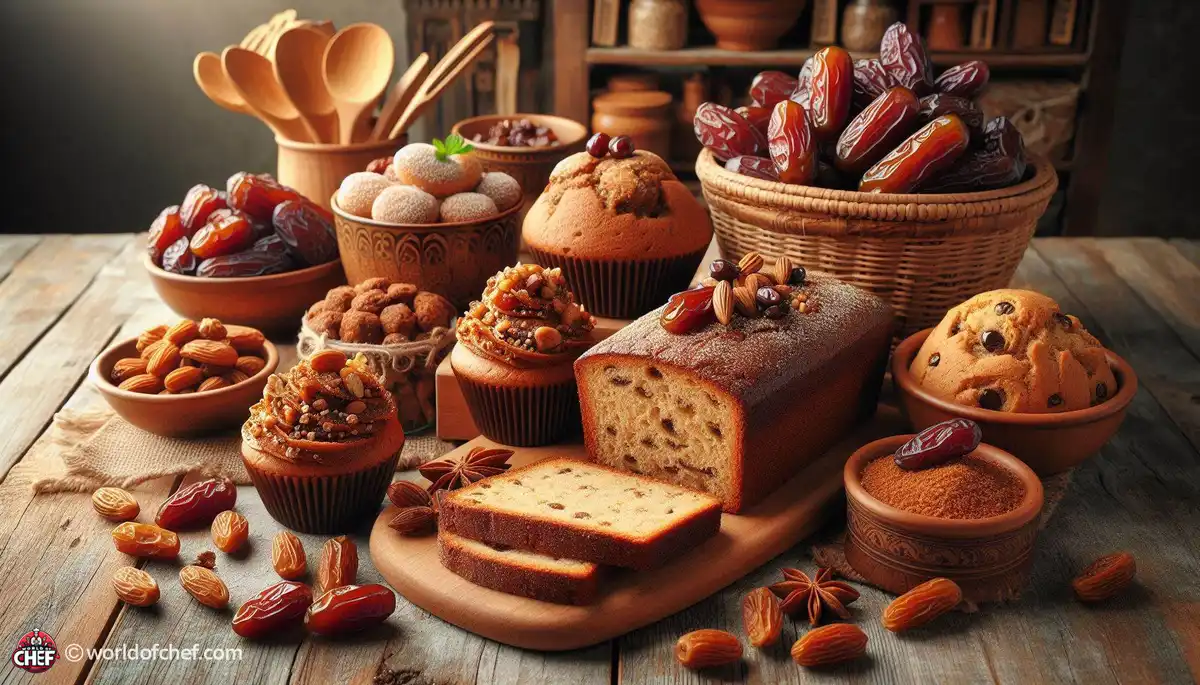
Understanding Oven Hot Spots and How to Bake Around Them
Russell Comeaux - Mar 30, 2025 - 13 min read


Choosing the right flour makes or breaks your baking. There are so many different types, and understanding the properties and uses of each one is crucial for the perfect texture and flavor in baked goods. Whether you are making cookies, bread, or cakes, the flour you use plays a major role in the final product. Let's now discuss the different types of flour, their characteristics, and how to choose the best one for your dishes.
Most kitchen pantries would have this all-purpose flour. All-purpose flour is good for almost anything, including cookies, cakes, and breads. It's made from a mix of hard and soft wheat and therefore has moderate protein content around 10-12%. This kind of protein level can be found in most recipes and thus is often preferred by most home bakers.
When working with all-purpose flour, the most essential step is accurate measurement. The common mistake when using measuring cups is pressing down into the flour and then spooning it out into a recipe. Using too much flour in the recipe due to compacting the flour will cause your baked products to be extremely dense and dry. When measuring with a cup, spoon your flour into the measuring cup and level off. Since most all-purpose flour comes enriched with vitamins and minerals, you'll be gaining nutritional value with your baked products.
The truth of the matter is that the type of flour used really makes the difference in results with so many recipes made from the all-purpose. You want to use an appropriate type depending on the baking activity: for example, artisan bread or delicate pastry dough made from other flours to produce better products. All-purpose flour skills help when you know just the right time to settle on such a flour, instead of a specialized flour type for a specific purpose.
Another important kind is bread flour. For bread enthusiasts, a higher protein content of about 12-14% in bread flour makes sure that there is the correct gluten strength for yeast breads. The chewiness that characterizes most breads is the result of gluten development. Trapped air bubbles during fermentation assist in the better rise and structure.
In the choice of flour, choose the ones whose labeling indicates "high protein" or "bread flour". Some bakers have become so specific about this: they even prefer the usage of both all-purpose flour and bread flour, usually to suit the right balance for the bread that will best suit their requirements. Just by adjusting the portions and ratios in which each is used in making your new bread recipes, you'll start finding that combination you call perfect.
This fact makes it important to highlight the kind of bread flour, bleached or unbleached, as this makes differentiations in flavor and even the color of your baked bread. Unbleached usually has a bolder taste, while the taste for bleached can even come out softer on crumb. Your preference, then, would depend entirely on the flavor profile that you want to have from the final product.
Everybody interested in baking should try out their cake flour who loves the making of cakes. Because it has fewer protein levels, it allows tender fluffiness as cakes sometimes around 7 to 9% and is often milled for better sugar and moisture uptake.
Some adjustments have to be made on the recipes when cake flour is used as a substitute. All-purpose flour cannot produce the same results in the recipe because cake flour contains less protein and has finer texture. A substitute for cake flour can be created using all-purpose flour and cornstarch, but the mixture should be followed in terms of ratio.
The bakers always recommend sifting the cake flour before using to get the lightest results. Aerating the flour and removing lumps will also help toward a smoother batter. Cakes requiring very precise techniques, such as chiffon or angel food cake, may benefit from using cake flour to obtain that ideal rise and tenderness.
In addition, whole wheat flour is superior to the refined flours. This is because the whole wheat kernel is processed in preparing it, hence it has the bran, germ, and endosperm in it. Whole wheat flour is, therefore, rich in fiber and vitamins as well as minerals. This flour can enrich the nutritional profile of baked goods in addition to lending a nutty flavor which most people enjoy.
However, working with whole wheat flour is a bit of a challenge. The increased fiber content can make the dough denser and it absorbs more liquid, requiring some adjustments in your recipes. Substituting all-purpose flour with whole wheat flour is often best started by using a 50-50 mix and then observing how the texture changes over time.
Baking with whole wheat flour will add a new taste and texture to your baked food. There are some bread recipes that benefit so well from the added depth, so do not be shy to try it in your own kitchen; it may surprise you as a new favorite.
Almond flour is one of the best substitutes for gluten-free baking. This flour, which is finely ground from almonds, gives it an original flavor and texture. Almond flour has protein and healthy fats in a rich content, so it's used in a wide range of recipes. Low-carb and paleo diets also favor this product due to its satiety when replacing traditional wheat flour.
Almond flour acts so differently and is not akin to all-purpose flour as it is used. Thus, it tends to be moister in baked products-more so than when the all-purpose flour is being used. This can, of course, be beneficial for those recipes, but it probably will require further eggs and/or binders to actually hold the structure of what you are attempting to complete. It all is adjusted in your recipes to suit the best result.
Almond flour can be mixed with other gluten-free flours, such as coconut flour or rice flour, to create a balanced texture in baked goods. Mixing different flour combinations can lead to some tasty discoveries and will enable you to create several gluten-free treats that everyone can enjoy.
Another extremely popular option is dried coconut meat, known as coconut flour. Because this flour absorbs liquid very quickly, there typically tends to be more liquid involved in using this flour as opposed to standard flours. It does add a richer fiber content and healthy fat to a recipe, bringing an unusually tasty flavor to any baked item. This product is super popular for those with diets for paleo or keto.
Working with coconut flour involves starting out with a very small amount within the recipe. For every regular cup of flour, you need a quarter cup of coconut flour. Additionally, if you're baking successfully, you will probably have to multiply the eggs or liquid within the recipe. Coconut flour can easily dry out baked goods if not adjusted appropriately.
Coconut flour is very ideal for making cakes, muffins, and cookies that are delicious and healthy. It has a sweet taste that makes it perfect for most ingredients and can be mixed in different ways to create something new in the kitchen. With some practice, you can be a master at baking with coconut flour and reap all its Health Benefits.
Spelt flour is an ancient grain that has gained popularity over the last few years. It has a nutty taste and is sometimes easier to digest than white wheat flour. It can be used in bread, pancakes, cookies, or any other recipe where you have the desire for good wheat flavor. Since spelt is richer in protein than all-purpose flour, it becomes a great choice for adding structure to your baked goods.
Spelt flour does take up more liquid than all-purpose flour, and you may have to experiment a bit with your recipes to find the right texture. But because spelt flour does contain gluten, you can substitute it where you would normally use all-purpose flour. Just be a little bit more gentle with the mixing of the dough so as not to make your baked goods denser.
Nutritional benefits in spelt flour include higher fiber content and more varieties of vitamins and minerals. It is perfect for individuals who would want to bake with whole grains but still have the same taste. It adds a new dimension to your favorite recipes because of its unique flavor and texture.
However, before finalizing a type of flour, you could first have a look at the recipe you are following. In fact, all baked foods have specific requirements and also, more importantly, all those processes that such a baked food undergoes using that particular ingredient are relevant to one's knowledge. For example, bread demands high protein content flour for its gluten strength, whereas a cake is able to employ softer type of flours containing minimal protein content so that ideal crumb formation can occur.
Try out a new recipe-remember to read the list of ingredients carefully because they tell you what type of flour would work best. Unless it is specified, just for beginners, follow such suggestions regarding a specific flour used within a recipe. After so many times of experimenting when you are more confident that you can do baking yourself, you can try various substitutions and see what is happening.
Also, consider your ideal flavor profile. Whole wheat flour or spelt flour is going to give you a nuttier taste, while cake flour will allow you to create a very light dessert. Each type of flour gives off different characteristics and pairing this with your recipe will give you the best results.
Flour grows old and its taste starts fading away and then becomes a bad quality one for baking things. Once you are willing to have flour, see the expiration date that appears on the flour package. Fresh flour is highly tasteful and does an excellent job; however, old flour will surely be of disappointing output.
If properly stored, an airtight container at a cool, dry location, away from the sunlight, the shelf life can also be prolonged. Bought in bulk, freezing would definitely be an option; thawed to room temperature prior to use, in summary, it's as easy as that.
If you ever feel unsure about the freshness of your flour, just smell it. Fresh flour will have a light, nice fragrance. On the other hand, stale flour will smell bad or rancid. Trust your senses and use only the best ingredients possible for your baking adventures.
Baking is as much an art as it is a science. Don't be afraid to experiment with different types of flour to see what works best for you. Mixing flours can yield exciting results and allow you to customize your baked goods to your taste preferences.
Begin with a simple substitution of some of the flour in your favorite recipes with something new. In this way, you have the opportunity to observe the interaction of different flours and how they influence flavor, texture, and pleasure. You will soon determine your personal favorites and craft signature recipes that are all your own.
Remember that baking is a journey, and half the fun is in exploration. Whether you are working to perfect a classic recipe or trying something completely new, allow yourself the freedom to experiment with different flours and techniques. So much can be discovered about the world of baking through every new creation, an opportunity for learning and excellent results.
The right selection of flour may make a difference in all your baking endeavors toward fantastic results. Ranging from all-purpose to specialty flours, there is always that specific quality each kind gives toward the texture, flavor, and nutrition. So, knowing the differences among the different kinds of flour will enable you to make informed choices in the kitchen.
As you start your baking adventures, remember the demands of a recipe, the freshness of your ingredients, and the pleasure of trial and error. Take the journey, enjoy the flour, and relish the goodies that will result. And with the right flour under your belt, you'll be well on your way to becoming a master baker in your own right. Happy baking!

Russell Comeaux - Mar 30, 2025 - 13 min read

Alexis Larose - Mar 25, 2025 - 15 min read

Hailey Morrill - Mar 21, 2025 - 18 min read

Bobby McKelvey - Mar 18, 2025 - 12 min read